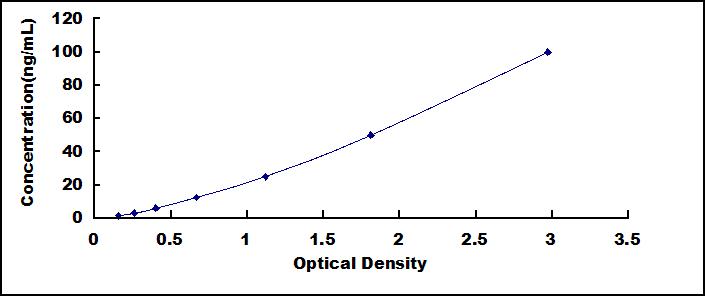Packages (Simulation)

Reagent Preparation

Image (I)
Image (II)
Certificate


ELISA Kit for Anti-Glutamic Acid Decarboxylase Antibody (Anti-GAD)
Glutamate Decarboxylase
- Product No.AED245Hu
- Organism SpeciesHomo sapiens (Human) Same name, Different species.
- Sample TypeSerum, plasma and other biological fluids
- Test MethodIndirect ELISA
- Assay Length2h, 30min
- Detection Range1.56-100ng/mL
- SensitivityThe minimum detectable dose of this kit is typically less than 0.59ng/mL.
- DownloadInstruction Manual
- UOM 48T96T 96T*5 96T*10 96T*100
- FOB
US$ 560
US$ 800
US$ 3600
US$ 6800
US$ 56000
For more details, please contact local distributors!
Specificity
This assay has high sensitivity and excellent specificity for detection of Anti-Glutamic Acid Decarboxylase Antibody (Anti-GAD).
No significant cross-reactivity or interference between Anti-Glutamic Acid Decarboxylase Antibody (Anti-GAD) and analogues was observed.
Recovery
Matrices listed below were spiked with certain level of Anti-Glutamic Acid Decarboxylase Antibody (Anti-GAD) and the recovery rates were calculated by comparing the measured value to the expected amount of Anti-Glutamic Acid Decarboxylase Antibody (Anti-GAD) in samples.
| Matrix | Recovery range (%) | Average(%) |
| serum(n=5) | 91-99 | 95 |
| EDTA plasma(n=5) | 79-93 | 85 |
| heparin plasma(n=5) | 81-99 | 88 |
Precision
Intra-assay Precision (Precision within an assay): 3 samples with low, middle and high level Anti-Glutamic Acid Decarboxylase Antibody (Anti-GAD) were tested 20 times on one plate, respectively.
Inter-assay Precision (Precision between assays): 3 samples with low, middle and high level Anti-Glutamic Acid Decarboxylase Antibody (Anti-GAD) were tested on 3 different plates, 8 replicates in each plate.
CV(%) = SD/meanX100
Intra-Assay: CV<10%
Inter-Assay: CV<12%
Linearity
The linearity of the kit was assayed by testing samples spiked with appropriate concentration of Anti-Glutamic Acid Decarboxylase Antibody (Anti-GAD) and their serial dilutions. The results were demonstrated by the percentage of calculated concentration to the expected.
| Sample | 1:2 | 1:4 | 1:8 | 1:16 |
| serum(n=5) | 78-90% | 82-90% | 80-94% | 95-102% |
| EDTA plasma(n=5) | 98-105% | 81-101% | 84-99% | 90-97% |
| heparin plasma(n=5) | 93-101% | 78-95% | 82-101% | 85-94% |
Stability
The stability of kit is determined by the loss rate of activity. The loss rate of this kit is less than 5% within the expiration date under appropriate storage condition.
To minimize extra influence on the performance, operation procedures and lab conditions, especially room temperature, air humidity, incubator temperature should be strictly controlled. It is also strongly suggested that the whole assay is performed by the same operator from the beginning to the end.
Reagents and materials provided
| Reagents | Quantity | Reagents | Quantity |
| Pre-coated, ready to use 96-well strip plate | 1 | Plate sealer for 96 wells | 4 |
| Standard | 2 | Standard Diluent | 1×20mL |
| Detection Reagent A | 1×120µL | Assay Diluent A | 1×12mL |
| TMB Substrate | 1×9mL | Stop Solution | 1×6mL |
| Wash Buffer (30 × concentrate) | 1×20mL | Instruction manual | 1 |
Assay procedure summary
1. Prepare all reagents, samples and standards;
2. Add 100µL standard or sample to each well. Incubate 1 hours at 37°C;
3. Aspirate and add 100µL prepared Detection Reagent A. Incubate 1 hour at 37°C;
4. Aspirate and wash 5 times;
5. Add 90µL Substrate Solution. Incubate 10-20 minutes at 37°C;
6. Add 50µL Stop Solution. Read at 450nm immediately.
GIVEAWAYS
INCREMENT SERVICES
| Magazine | Citations |
| Egyptian Pediatric Association Gazette | Antinuclear antibodies and glutamic acid decarboxylase antibodies in children with refractory epilepsy ScienceDirect: S1110663813000128 |
| Endocrine Abstracts | Study on glutamic acid decarboxylase antibodies (Anti–GAD) in blood serum for early diagnosis of diabetes mellitus |
| Catalog No. | Related products for research use of Homo sapiens (Human) Organism species | Applications (RESEARCH USE ONLY!) |
| RPD245Hu01 | Recombinant Glutamic Acid Decarboxylase (GAD) | Positive Control; Immunogen; SDS-PAGE; WB. |
| AED245Hu | ELISA Kit for Anti-Glutamic Acid Decarboxylase Antibody (Anti-GAD) | Enzyme-linked immunosorbent assay for Antibody Detection. |








